I love English muffins, but it had been too long since I've made them. When I made apple butter last fall, I decided that I had to make them again - nothing else would do.
Knowing that I can easily make bread at home, I almost always refuse to buy it at the grocery store unless it's a super sale; homemade bread is that much better. I occasionally buy English muffins, for the novelty of it, because I love toasting them and eating them with jam or honey or almond butter.
But these English muffins are so much better. They take only 7 ingredients, and they're easy to make. I wouldn't say that they're fast, but it's a simple afternoon project to make them on a cold fall or winter weekend.
Jump to:
[This post contains affiliate links. I may make a commission for purchases made through links on this post. As an Amazon Associate, I earn from qualifying purchases.]
I first made these on a lucky snow day 6 years ago. I had vowed to spend the day baking if I got to stay home, and I made good with that by making baking both brownies, and cooking Braised Short Ribs with Chocolate and Rosemary for a second time. I ambitiously had to get the most out of my snow day; I decided I wanted to make bread since I already had sweets in the house, and tackled English muffins, which had long been on my cooking wish list.
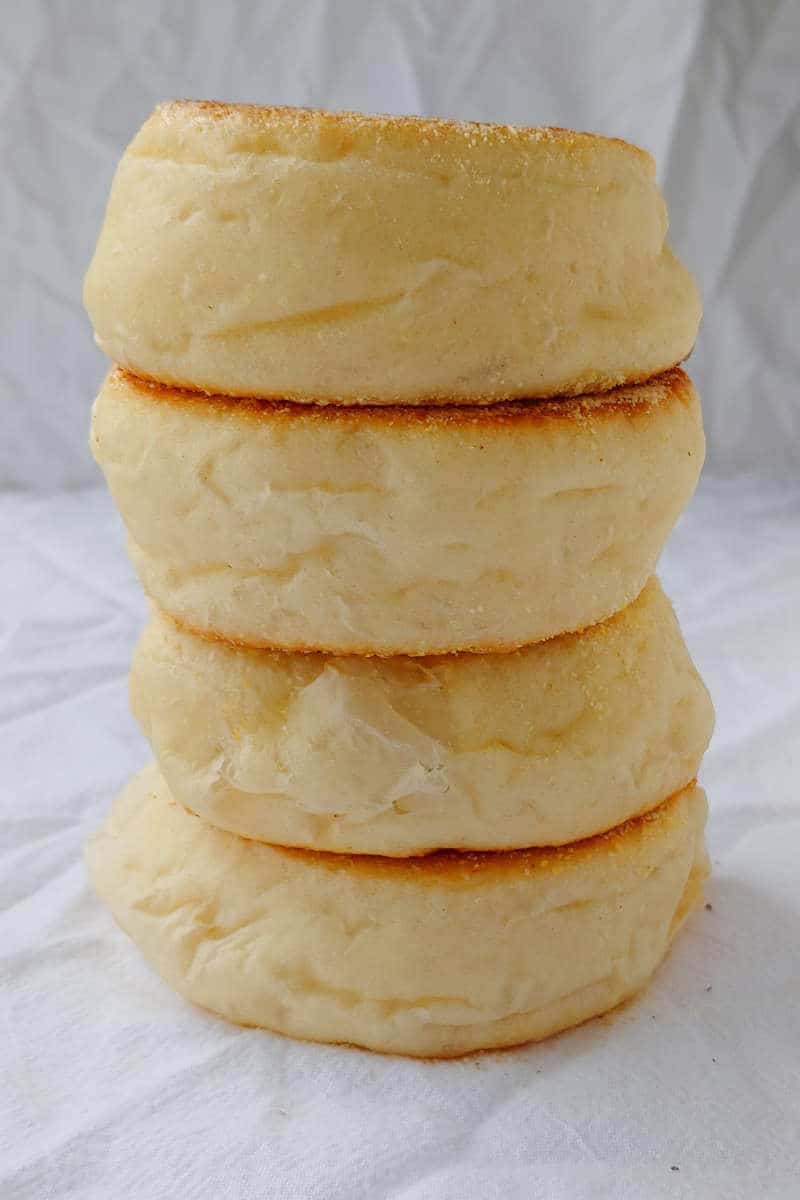
I've come across a few recipes for English Muffins, and even tried a batter-based that yielded very poor results for me, but the one that seemed the easiest to attempt in 2011 was the recipe from Peter Reinhart's The Bread Baker's Apprentice (affiliate link). I haven't tried a different recipe since.
What Are English Muffins?
In a short answer: delicious.
Despite the name, English muffins were actually invented in the United States. They were originally called "toaster crumpets" by Samuel Thomas, a British ex-pat in New York, when he invented them in the 1880s or 1890s. (So are they American for being invented in the US, or English for being invented by someone from Britain?)
What are they? They're not cakey muffins like what Americans usually think of. They're tender and soft, chewy pieces of bread, made from a yeasted dough. They're split in half across the middle using a fork, so that you create two textured surfaces that toast up nicely.
Honestly, they're one of my favorite breakfast foods, and I simply don't make them often enough (although I think that'll change now).

How to Make English Muffins
Making English Muffins isn't difficult, but since it's a yeast bread, it does take a little time.
This recipe makes English muffins from a soft, easy-to-handle dough. Some English muffins are made with a thick yeasted batter that is dropped into tins or rings to make them round. This recipe does not. I tried batter twice (with Alton Brown's recipe), and they never turned out right. Peter Reinhart as well has a batter-like English muffin recipe in his Artisan Breads Every Day (affiliate link). I've enjoyed other recipes from that book, but I'll never try that one because I like this recipe so much.
Ingredients for English muffins are simple - just flour, yeast, salt, a little sugar, a little butter or shortening, and milk. You can use any kind of milk in this - I expect nondairy milk would work fine as well, based on other breads I've made. You sprinkle cornmeal on each side of the dough after you shape it into muffins, but you can use cream of wheat or semolina instead if you'd like.
Just mix all the ingredients (excepting cornmeal) together, whether by hand or in a mixer. The amount of flour (and milk) varies with the season; making them in January was different than making them in October. Flour is a little drier in the winter, so you often have to add more milk then.
It's easier to add flour to a wet dough than to add milk to a dry dough, particularly if making dough by hand. Start by only adding 2 cups of the flour to the dough, and adding the remaining if you need it.
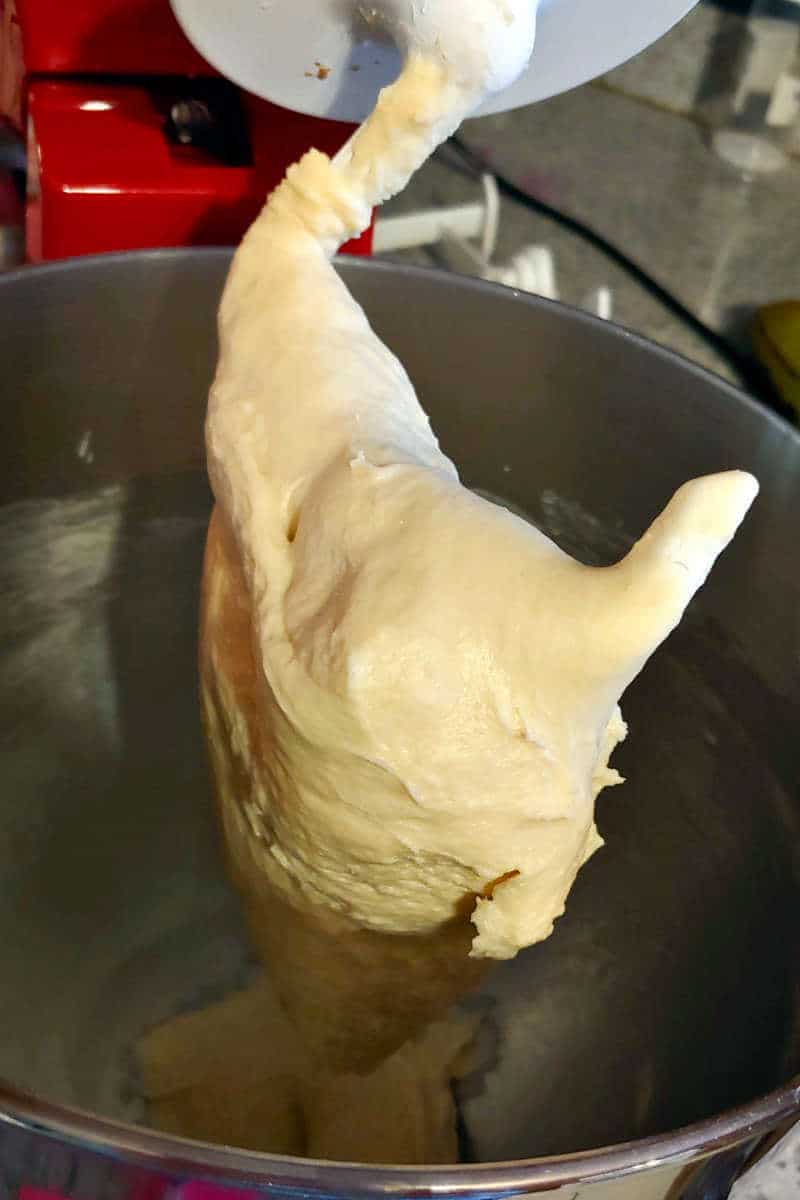
Knead the dough for 8 minutes in the mixer (or 10 minutes by hand). Add a little flour or milk as necessary as you knead. You want the dough to be soft and squishy, not stiff. The dough should be tacky, like a Post-It note, where it clings to your finger but doesn't leave residue. You don't want sticky.
If you're using a stand mixer, the dough will cling to the bottom of the bowl but not the sides. When you knead the dough, you may think it's too shaggy and rough and won't smooth out - but it will.

After letting the dough rest for 60-90 minutes (depending on the warmth of your house, of course) until it doubles in size, cut the dough into 6 wedges and shape them into balls. Take the edges of a piece of dough and pull them underneath the dough. Keep pulling the edges underneath and poking them into the ball of dough to increase the surface tension.
Place each ball on a baking sheet or parchment sprinkled with cornmeal. Spray each ball (very important, so that plastic wrap on top doesn't stick to the dough) and sprinkle with more cornmeal. Let rise for another hour.
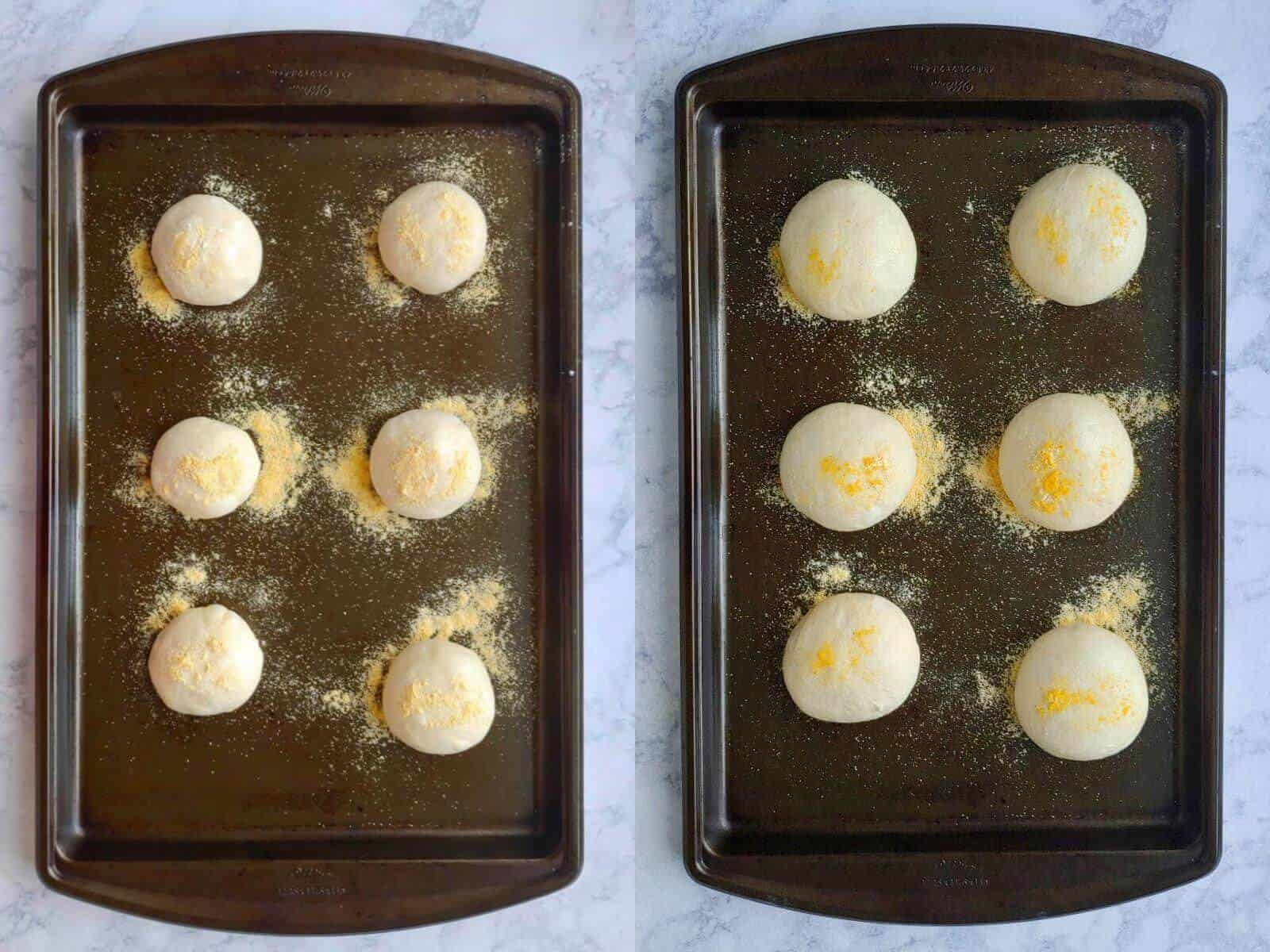
English muffins first are cooked on a griddle to get the nice crusty tops and bottoms, and then finish cooking in the oven. I use a non-stick electric griddle (affiliate link) to cook mine, as this way I can cook all 6 at once. My griddle is non-stick so I haven't had to oil it, but please oil yours if it needs it.
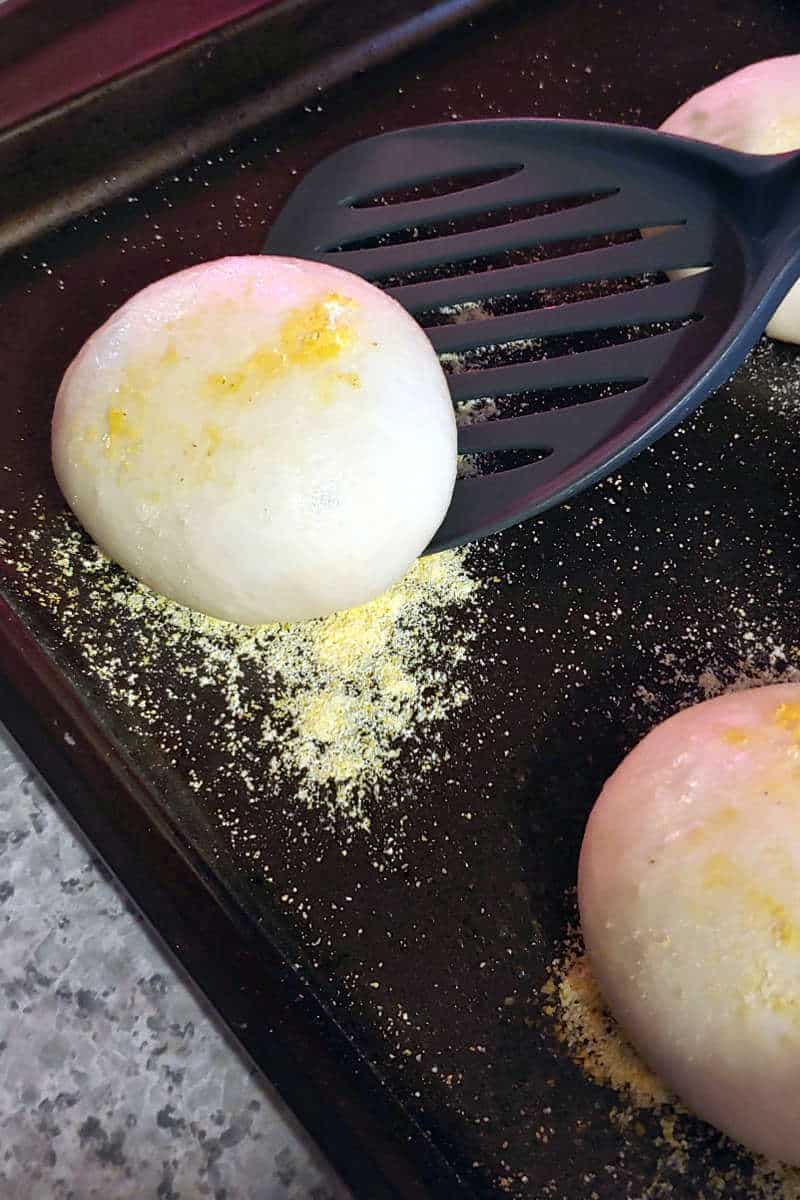
Use a spatula to gently transfer the muffins from the pan to the griddle (instead of flipping them over). If you have to griddle the muffins in stages, you'll need to bake them in stages too; if you wait to bake them all at once, the first batch won't cook all the way through.
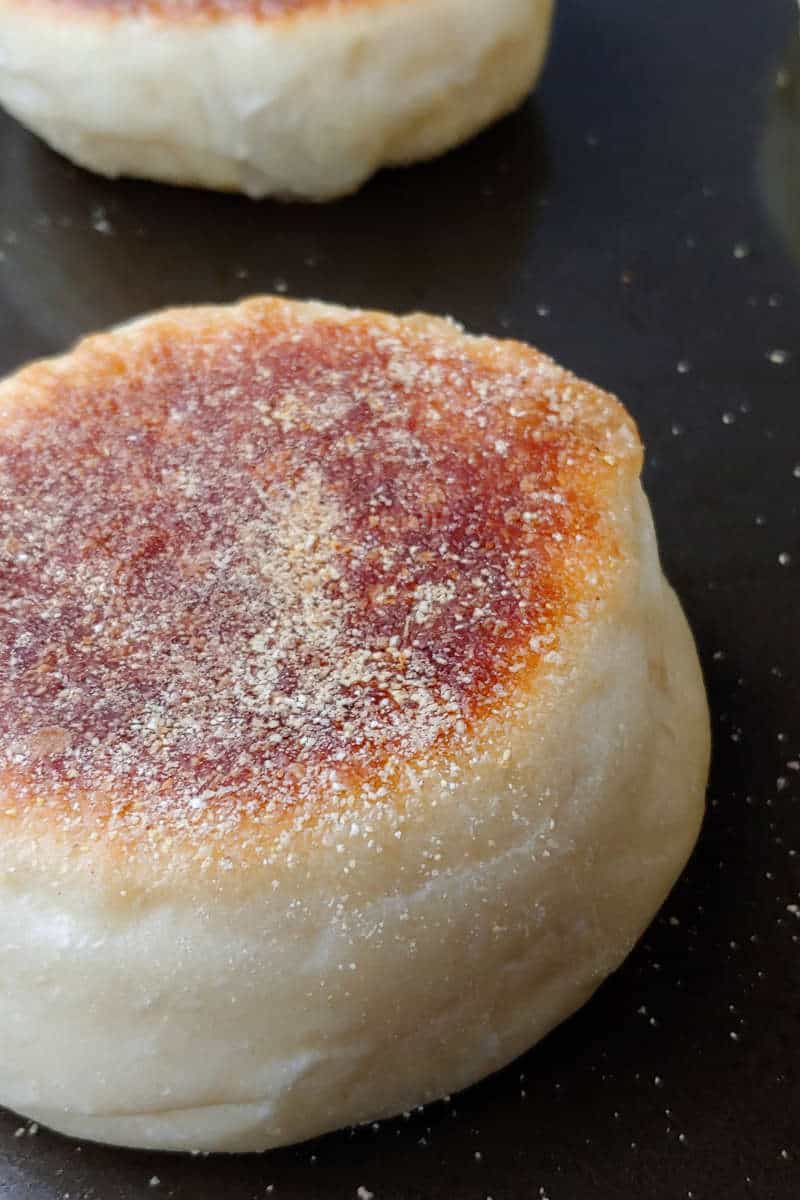
You'll cook them at 350F for 5-8 minutes per side on the griddle. If the English muffins seem delicate when it's time to flip them on the griddle, you can gently roll them over to turn them. Once they're done griddling, it's time to bake them for another 5-8 minutes at 350F. I always dump the excess cornmeal from my original baking sheet and use it to bake them.
How to Serve English Muffins
I tried one English muffin about 30 minutes after baking them. I ate half untoasted, and toasted the other half. They tasted nice and English muffiny. They may be more dense than the ones you buy at the store; I think that's going to be par for the course for homemade English muffins. But, they're homemade, and only took 7 ingredients!
Even if they're a little more dense than you expect, or they don't have the same nooks and crannies that store-bought ones have, they're very delicious. Next time, try using a tiny bit less flour or adding a little bit more milk.

Always toast your English muffins. If you don't, they may get soggy when you top them. And, always use a fork to split English muffins across the middle. That way you have crags that toast nicely!
These English muffins are a little bigger and heartier than the ones you buy at the grocery store - perfect for making breakfast sandwiches. They're traditional for eggs Benedict.
Personally, I prefer them with almond butter, or apple butter, or even just with honey.
How to Store English Muffins
Store in an airtight container at room temperature. I'm not sure how long they last - we all love them, so they disappear quickly.
I haven't stored them in the freezer, but I expect that they would freeze well if you wrapped the cooled baked well a couple of times in plastic wrap, and stashed it in a freezer bag.
Want other breakfast recipes?
Want other bread recipes?
Interested in other recipes? I save and share recipes I like or want to try on my Pinterest page - follow me there! You can also check out my Facebook page for more recipes and helpful tips. I'm also happy to try to help troubleshoot my recipes there.
Have you tried this recipe? Or have a question about it? Rate it or leave a comment below! (PS: rating my recipes helps other people find them, too!)
📖 Recipe
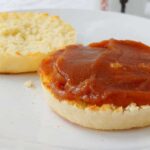
Delicious homemade English muffins are so much better than store-bought! Soft yet chewy, this easy recipe takes only 7 ingredients! Perfect for brunch or an afternoon snack.
- 2 ¼ cups bread flour (280 grams)
- ½ tablespoon sugar (8 grams)
- ¾ teaspoon table salt (5 grams)
- 1 ¼ teaspoon yeast (5 grams)
- 1 tablespoon butter (14 grams) (preferably softened, especially if making dough by hand)
- ¾ cup milk (170 grams; plus a little extra if necessary)
- cornmeal, for sprinkling
-
Combine 2 cups of the flour, sugar, salt, and yeast in the bowl of a stand mixer (or a large bowl if mixing by hand). Stir briefly with a dough hook to combine.
-
Add the butter and the milk, and mix on low until a dough forms. The dough should be soft, not stiff. If the dough doesn't come together, add more milk, little by little. If the dough is wet and sticky, add a little of the ¼ cup flour you've held back.
-
Mix at medium speed for 8 minutes (or 10 minutes, if mixing by hand), until the dough is soft and tacky. (Tacky is like a Post-It note - it leaves behind little residue on your finger if you press it.) If the dough sticks to your fingers and leaves dough behind, add in a little extra flour. The dough will pass a windowpane test at this point (see notes).
-
Place dough in a greased bowl and cover with plastic wrap. Let rise in a warm area for 60-90 minutes, until dough has doubled in size.
-
Turn dough out onto lightly floured surface. Divide into 6 equal pieces (each about 3 ounces/85 grams in weight). Take the edges of each piece and pull them underneath themselves to form a tight ball. Continue pulling the dough underneath itself as long as it takes to get surface tension.
-
Place balls of dough on a baking sheet sprinkled with cornmeal. Spray the tops of the balls, sprinkle with more cornmeal, cover with plastic wrap, and let rise for another 60 minutes, until they have doubled in size again.
-
Heat a griddle to 350F, and preheat your oven to 350F as well. Slide a spatula underneath each piece of dough to transfer it to the hot griddle. (If you don't have room for all the English muffins, keep the remaining dough covered.)
-
Cook on the first side for 5-8 minutes, until well browned. Flip and cook for another 5-8 minutes, until you can't cook it longer without scorching it.
-
Transfer cooked English muffins to a baking sheet. Immediately bake in the 350F oven for another 5-8 minutes to cook the middle. (If you couldn't griddle all your muffins at once, do not wait for your remaining muffins; this will mess up the cook time.)
-
Repeat the cooking process with your remaining pieces of dough. Cool completely before splitting and toasting. Store in an airtight container.
A soft dough is essential for making these muffins. I've held back a little of the flour because it's easier to add flour to a wet dough than it is to add liquid to a dry dough.
Windowpane test: take a small piece of dough and flatten it out with your fingers. It should stretch and not tear easily, and you should be able to get it thin enough to see light through it.
Cold kitchen? I often preheat my oven for 1-2 minutes, then shut it off and put my dough in it to rise.
Adapted from Peter Reinhart's The Bread Baker's Apprentice (affiliate link)
In the past:
One Year Ago: Easy French Bread, The Best St. Louis Gooey Butter Cake
Two Years Ago: Smoky Cashew Dip
Four Years Ago: Key Lime Pie, Microwave Peanut Brittle
Five Years Ago: Almond Meal Pancakes, Pear Walnut Muffins
Six Years Ago: Pepper Pork Chops, Alton Brown's Tres Leches Cake
Seven Years Ago: Hainan Chicken and Rice, Chocolate Chip Pie, Lemon Sugar Crunch Buns
Eight Years Ago: Martha Stewart Popovers
Nine Years Ago: Fudgy Butterscotch Bars
(Originally posted February 2, 2011. Updated recipe in October 2018; further updates to recipe, photos, and text in January 2019.)

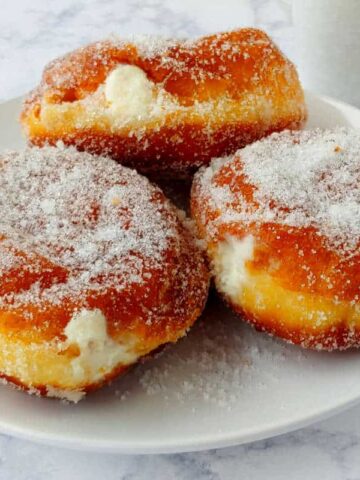
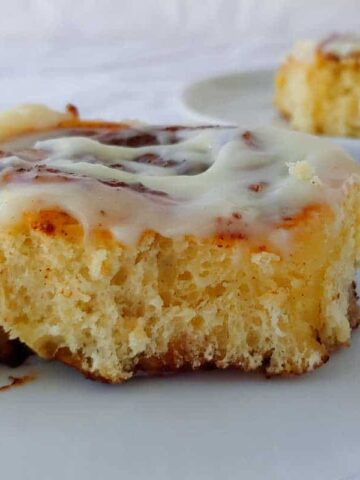
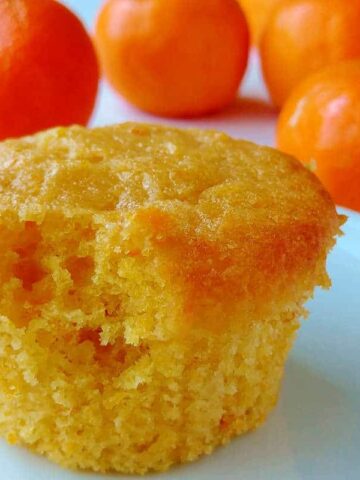


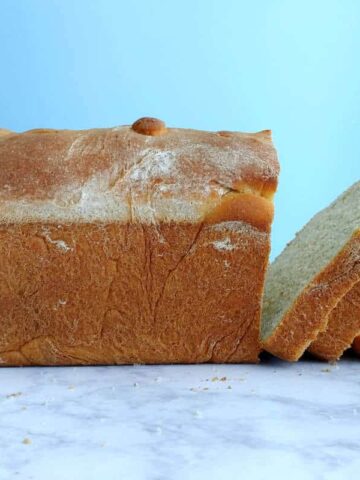
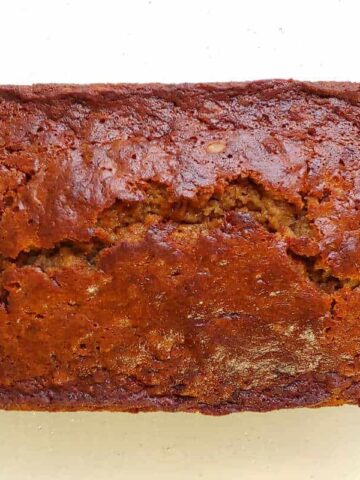
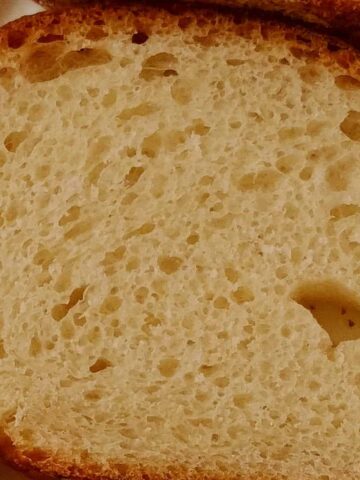
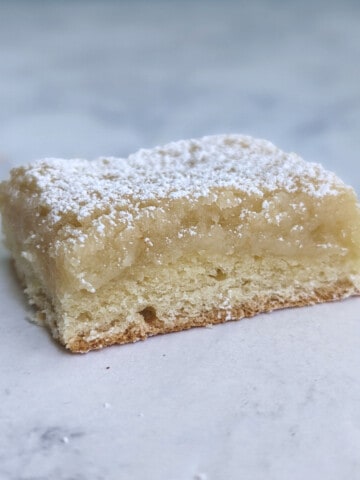

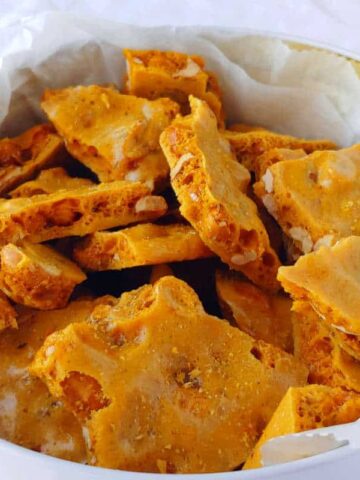


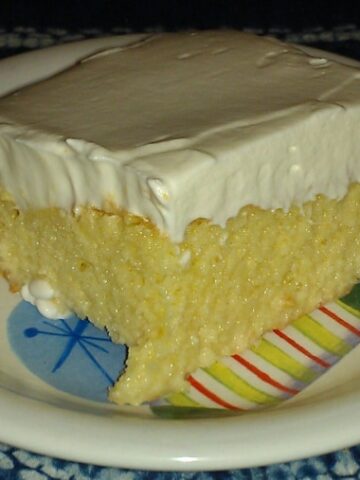
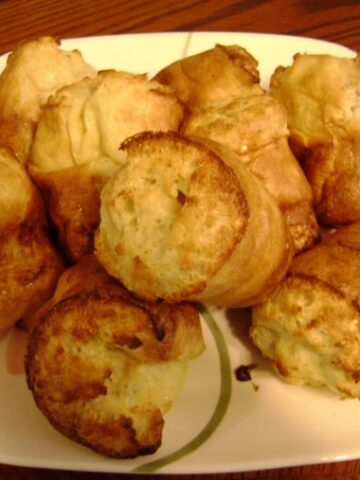

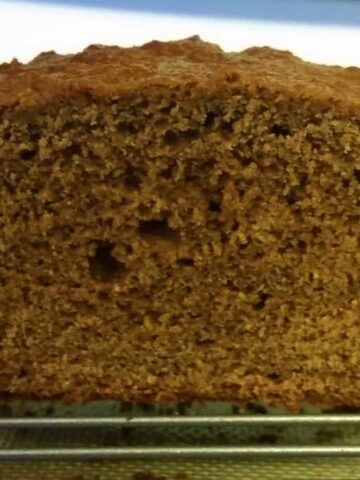
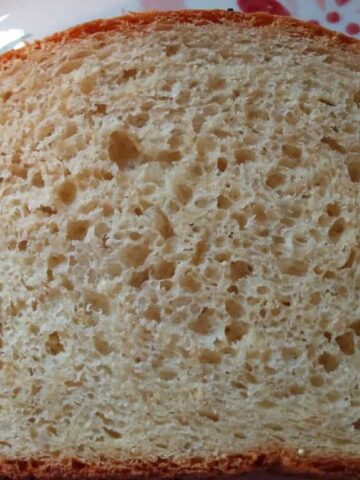
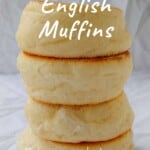
Mark T says
This dough seems almost like Pizza dough. Just not as much kneading. A lot of recipes say not to use Quick yeast or Bread machine yeast. Any thoughts on this? Thank you in advance! I have wanted a recipe for English muffins for a long time. I definitely will be trying this one!
Leona Konkel says
I've never made a pizza dough that took milk instead of water, personally.
I've only bought regular yeast; however, I don't see why you couldn't use quick or bread machine yeast. Your rising times may be shorter, so I'd check the dough early to see how it's rising. If your dough has doubled in size more quickly than expected, go ahead and move to the next step instead of letting it proof longer.
I hope you enjoy the recipe. If you try it, let me know how it turns out!
Danielle says
My son loves English Muffins but we haven't been able to find any that he finds palatable since he was diagnosed with Celiac Disease. Do you know how well this recipe would do if I used a gluten free all purpose flour instead of bread flour?
Leona Konkel says
Honestly, I don't think that gluten-free flour would work in this recipe because it uses bread flour and has a long kneading time to develop gluten. Using a recipe that is specifically made for gluten-free flour would be a much safer bet.
I haven't made any of these recipes, but if I were to try a gluten-free English Muffin recipe, I would try:
https://glutenfreeonashoestring.com/super-fluffy-gluten-free-english-muffins/ or
https://www.glutenfreepalate.com/gluten-free-english-muffins/ or
https://cupcakesandkalechips.com/gluten-free-english-muffins/
Minimalist Baker also has a gluten-free English Muffin recipe, but she makes her own gluten-free flour mix as she makes the bread.